When Art Takes Wing
First published in Sanctuary Asia,
Vol. 35
No. 6,
June 2015
Text and Artwork by Sangeetha Kadur
With delicate strokes and bold splashes of colour, professional artist and amateur naturalist Sangeetha Kadur captures the exquisiteness of birds.
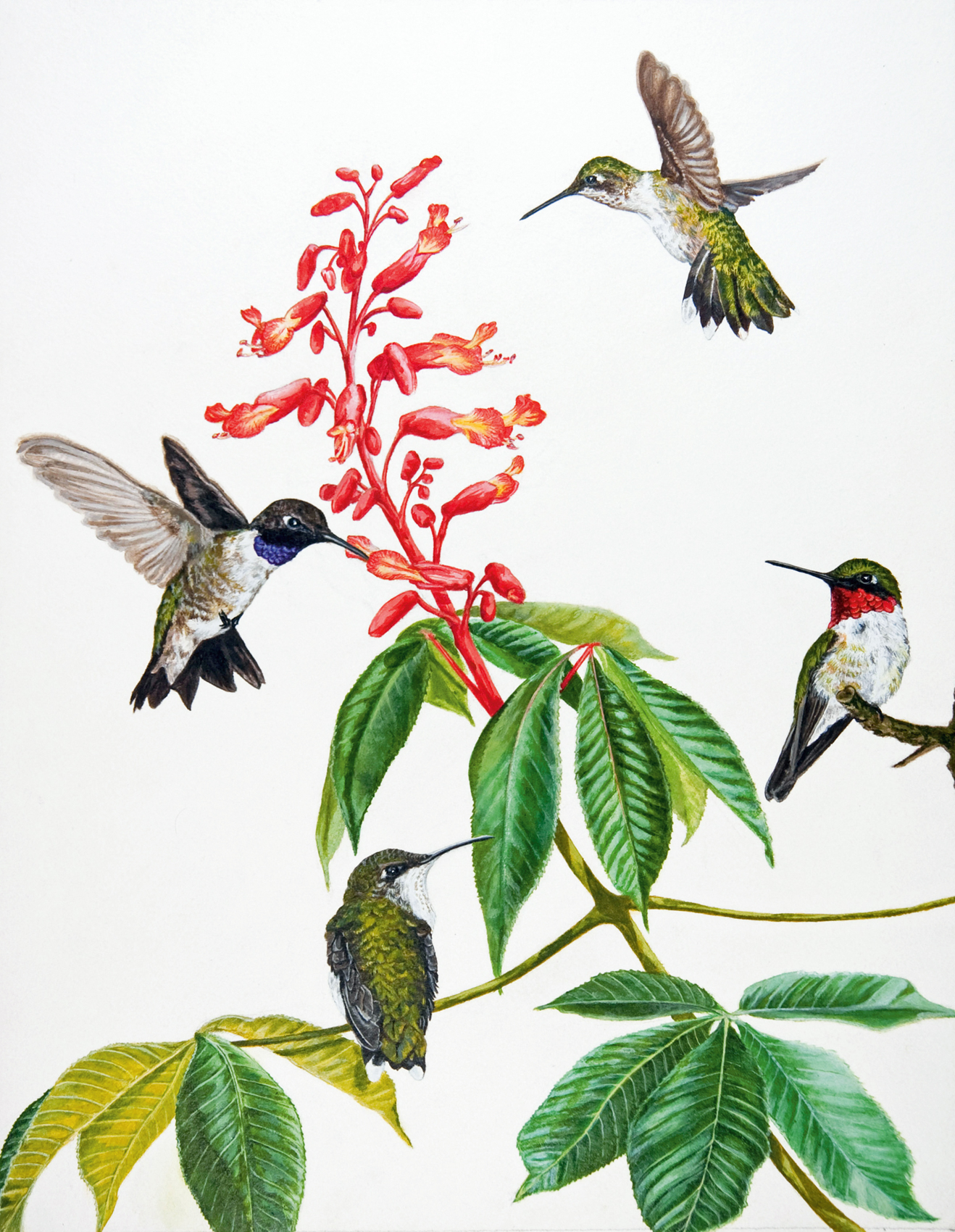
Nectar Feeders
Most hummingbirds are attracted to red blooms and inflorescence. Illustrated here are the male and female Ruby-throated Hummingbird Acrchilochus colubris and Black-chinned Hummingbird Acrchilochus alexandri, feeding on red buckeye Aesculus pavia. This illustration was nominated as a finalist at the BBC Wildlife Artist of the Year 2009 in the ‘World Birds category.
Medium: Acrylic on Arches watercolour paper
Birds portray an exquisite charm of their own. Their extraordinary power of flight sets them apart from most creatures. I wonder if its their colourful feathers, their unique forms or their playful, inquisitive behaviour that has for so long captured my attention.
My rendezvous with the wild started in my childhood since I grew up in a family of nature enthusiasts. Most of my vacations, weekends, and time offs were spent in forests and wildlife sanctuaries. Spending time in the wilderness was a beautiful routine that got ingrained into my day-to-day life. Like most children, I was naturally drawn to spotting large ears, long tails, big eyes, spots, stripes and snouts. In those days, I didnt fancy watching birds as much, but nonetheless, I was secretly proud to be amongst the very few in school to know that the long tailed green birds were ‘parakeets and not ‘parrots; the common raptors in the city were ‘kites and not ‘eagles. Though my art college days confined me to an urban space, many enlightening interactions with a brilliant birdwatching group in Bengaluru brought me amongst like-minded, passionate naturalists. And this is where my fascination for the world of birds grew.
With a keen interest in art intimately bound with my passion for the natural world, I set out on a path of exploring a career as a wildlife artist. Within a couple of years into this uncertain journey, I joined Felis Creations, a visual arts company with a focus on conservation. This helped me carve out a professional niche for myself. My first commission was in collaboration with Gorgas Science Foundation, USA. It was a project to paint the smallest, most agile, finely gorgeted, iridescent flying jewels of the New World - the hummingbirds! It involved composing each of the plates of the book with various bird species, their respective flora and habitat, capturing their proportionate sizes, forms, behaviours, colours and detailing. Painting the first volume of this book turned out to be more than just a learning process; it was a rewarding experience getting a peek into the life of this exquisite bird.
With the insights gathered from the hummingbird project, I went on to paint many diverse species of birds and animals. With every life form that I draw, I seem to observe more intently. I realised that learning is extremely profound in art. The intensity of focus required to first imitate and then recreate something with my lines and strokes is constantly challenging and yet immensely gratifying.
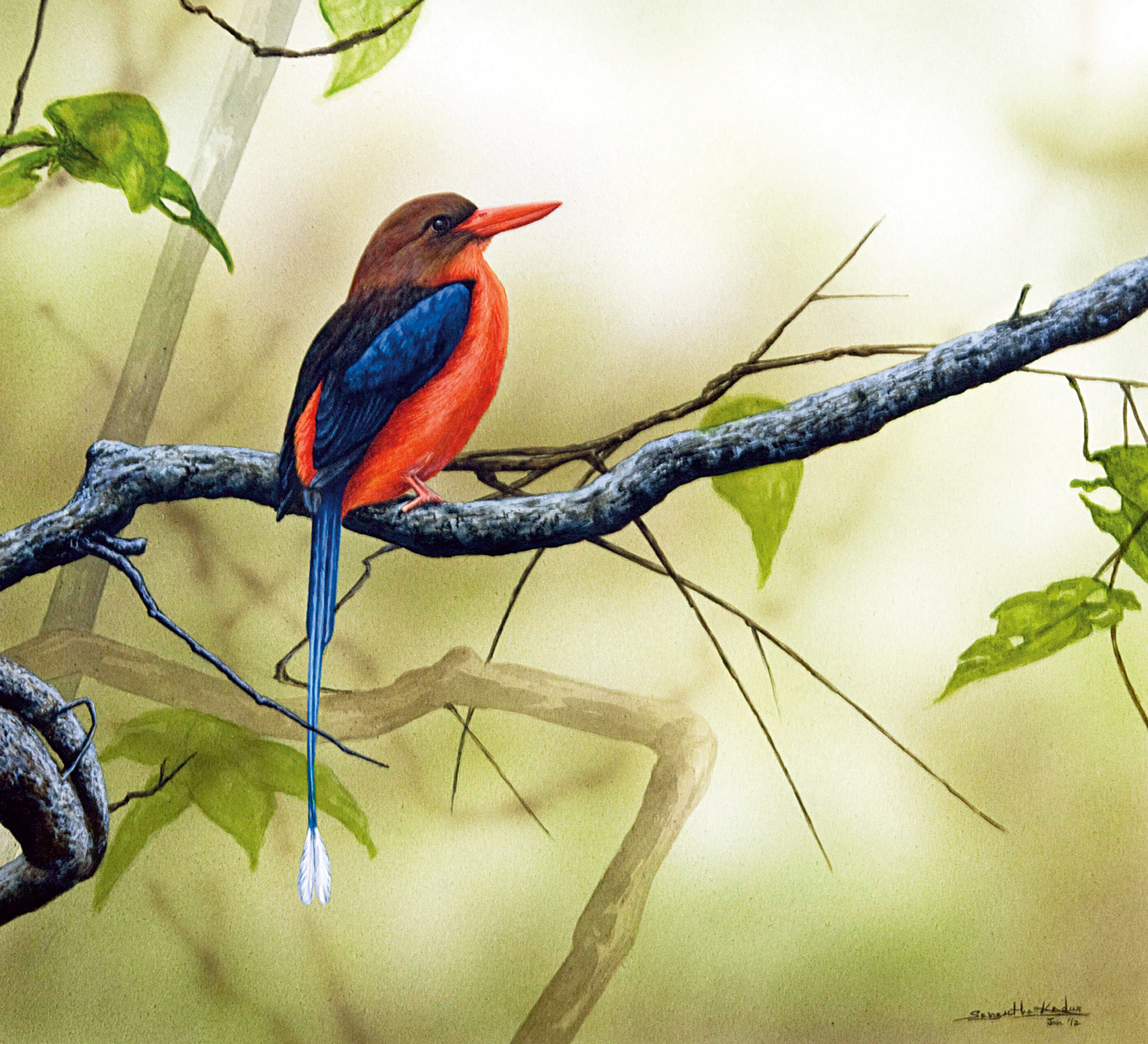
Brown-Headed Paradise Kingfisher Tanysiptera danae
Endemic to the islands of Papua New Guinea, this Brown-headed Paradise Kingfisher belongs to a group of tree kingfishers characterised by their elegant, long tail streamers. There are eight species of paradise kingfishers in the world.
Medium: Acrylic on Arches watercolour paper
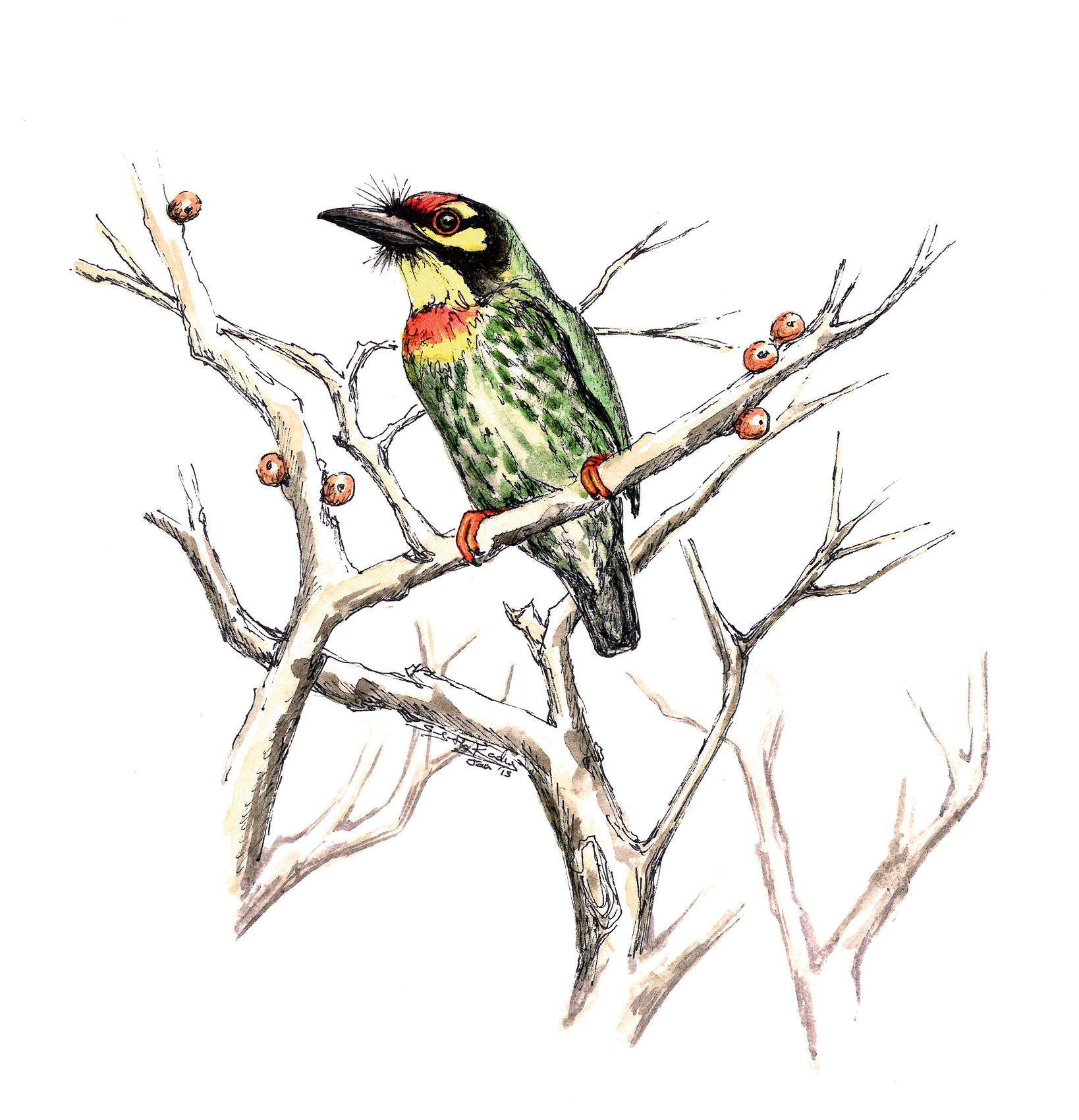
Coppersmit Barbet Psilopogon haemacephalus
You can usually spot a Coppersmith Barbet in any of the fruitingfig trees, as figs are an important part of their diet. Though patterned with a riot of colours, this little green blob could easily go unnoticed within leafy foliage.
Medium: Pen, ink and watercolour on paper
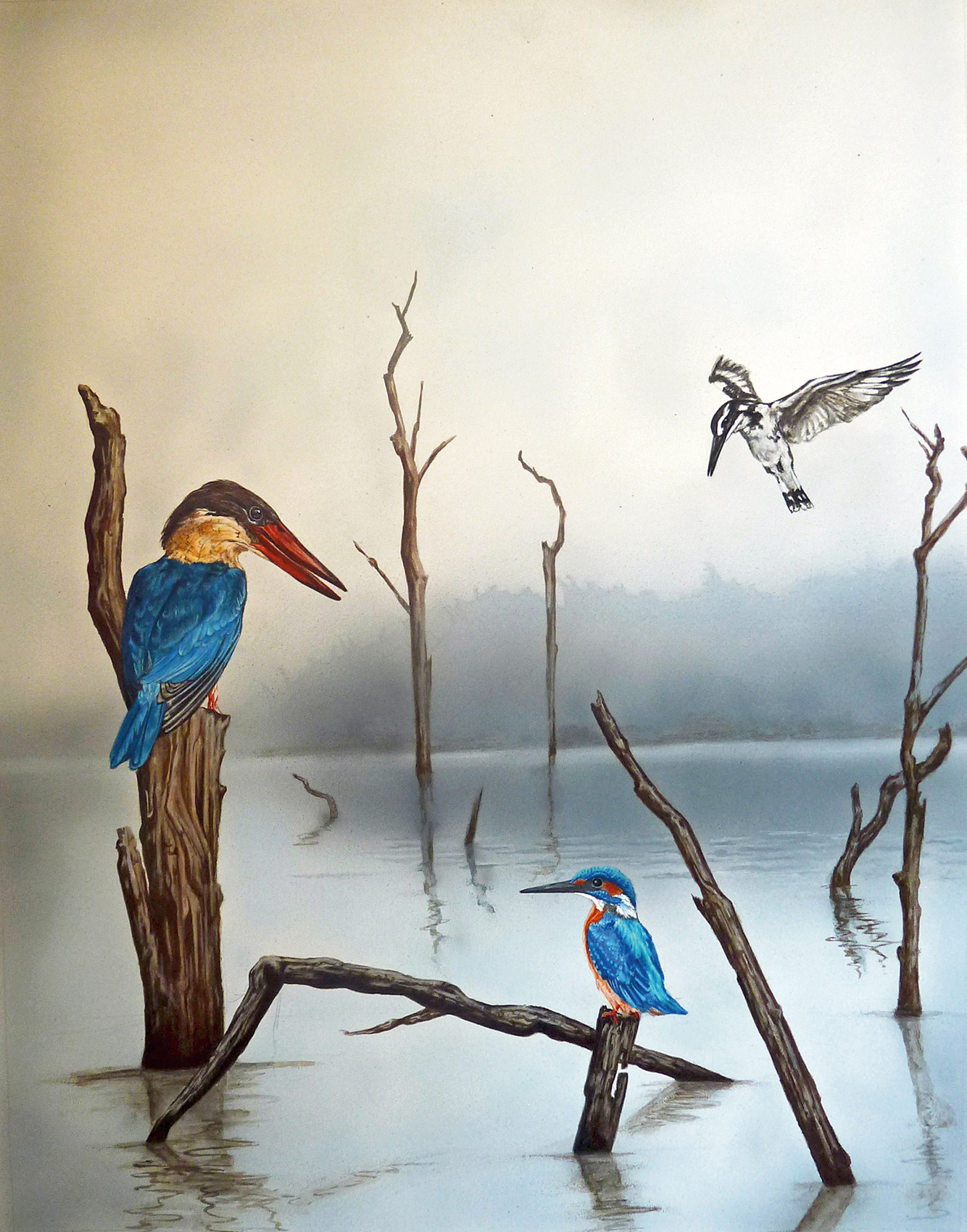
Kingfishers in the Mist
While a Pied Kingfisher Ceryle rudis hovers over the still waters of the misty morning; the Common Kingfisher Alcedo atthis and the Stork-billed Kingfisher Pelargopsis capensis perch over stumps of dead wood and patiently wait for their prey.
Medium: Acrylic on Arches watercolour paper
As an artist and a naturalist, capturing a captivating glimpse from nature and bringing it upclose to the eyes of the viewer carries a sense of responsibility that I cherish. And yet, in the end, its not the painted canvas, the skill and the appreciation alone, that I seek. If through my art, I can truly create a spark of wonder, a curiosity and an admiration that connects the two worlds, that of the illustrated with that of the existing, then, it seems all worthwhile. As I continue on this journey with this ever diverse natural world, I wish to render everything that leaves me inspired.
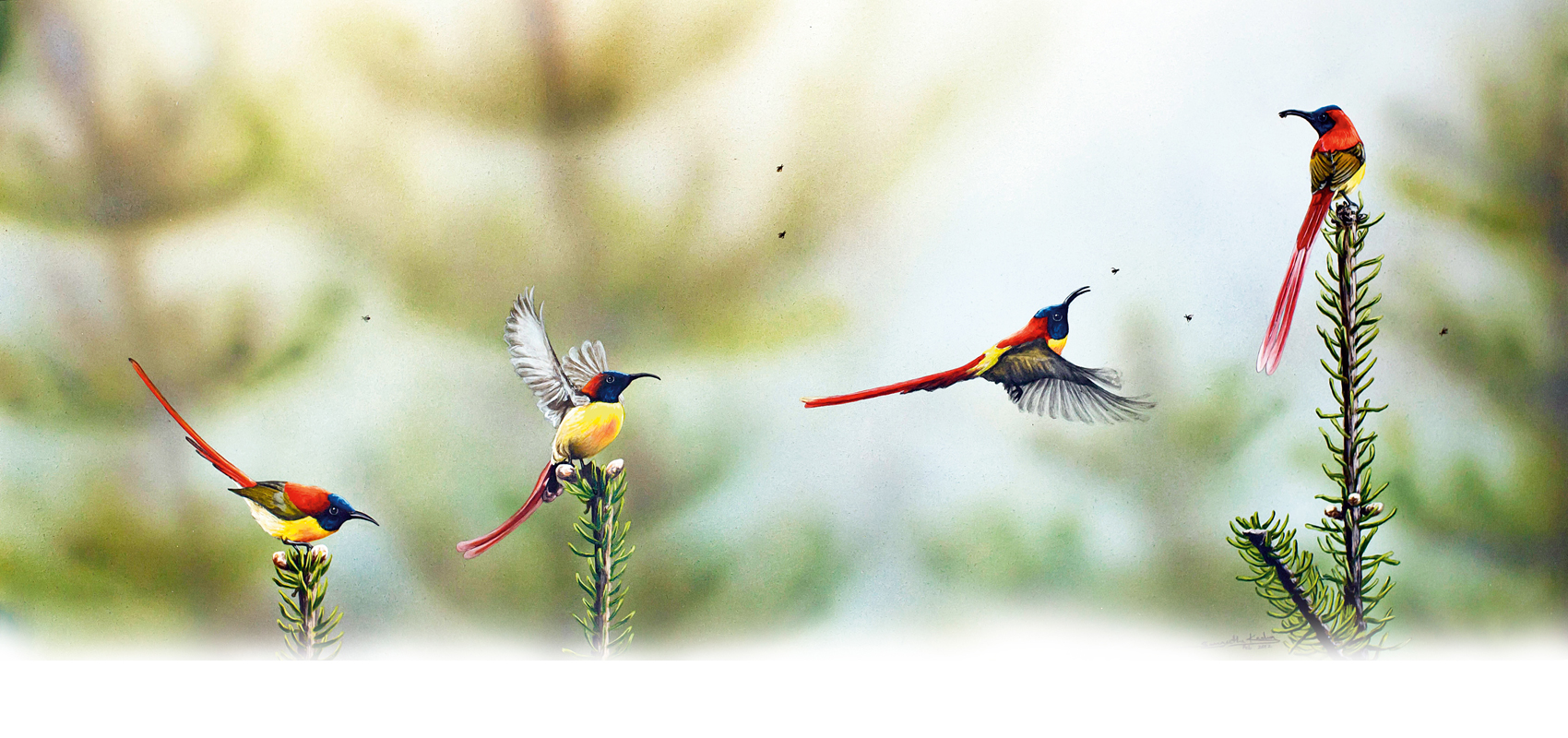
Fire-Tailed Sunbird Sequence
An inhabitant of high-altitude rhododendron forests in the Himalaya, the Fire-tailed Sunbird Aethopyga ignicauda is one of the 12 species of sunbirds found throughout India. Although they are nectar-feeders, these sunbirds occasionally supplement their diet with insects. The above painting depicts a Fire-tailed Sunbird making spectacular aerial sallies, behaving more like a flycatcher than a sunbird. This painting was among the finalists in the International category at the BBC Wildlife Artist of the Year 2012 competition.
Medium: Acrylic on paper
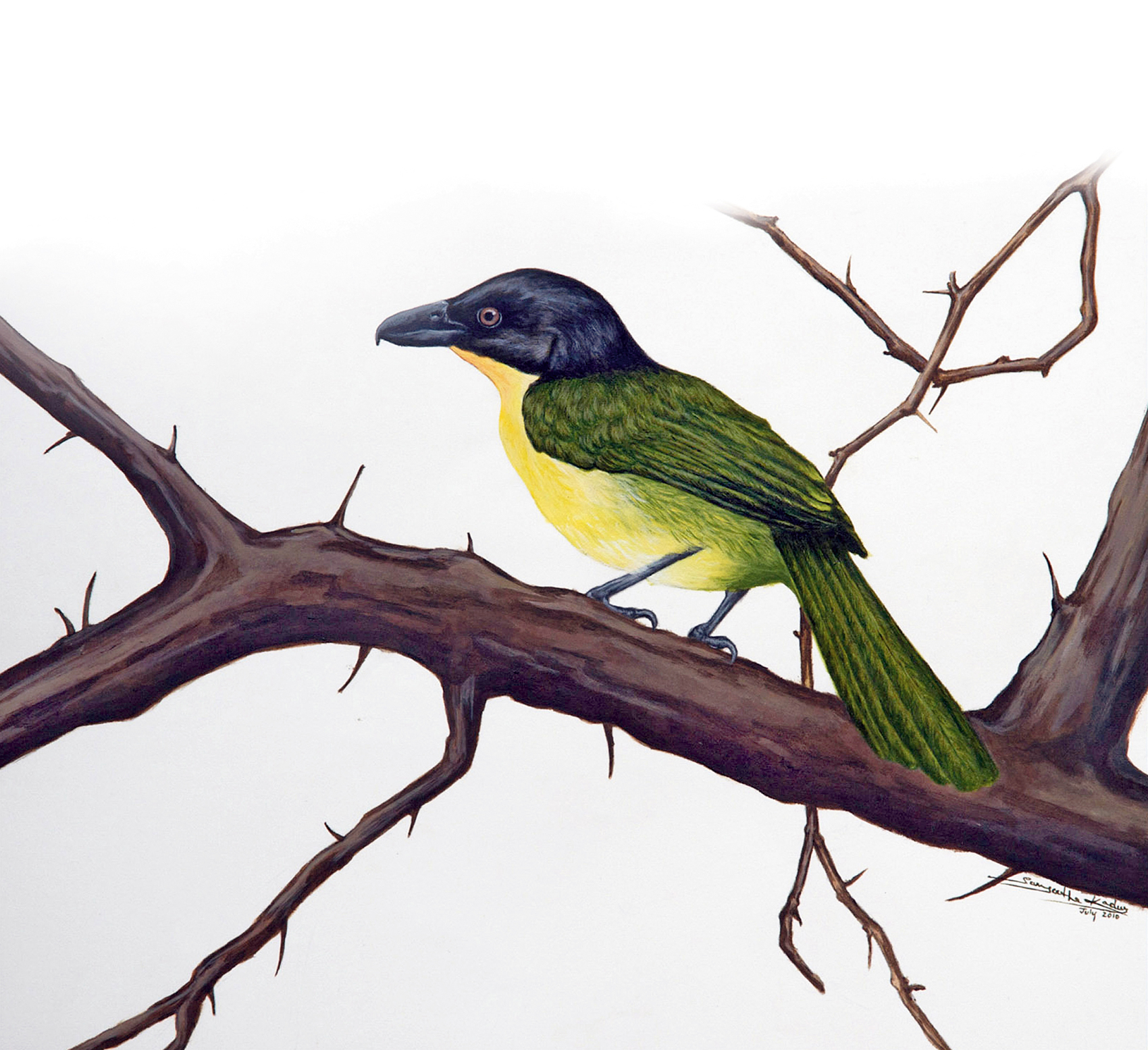
Uluguru Bush-Shrike Malaconotus alius
Hardly ever photographed in the wild, it is regarded as the rarest of all the birds of Africa. This critically endangered canopy dweller is confined to a small area of the Uluguru Forest Reserve, with population estimates of less than 1,200 pairs in the wild.
Medium: Acrylic on paper.
First appeared in: Sanctuary Asia, Vol. XXXV No. 6, June 2015.







